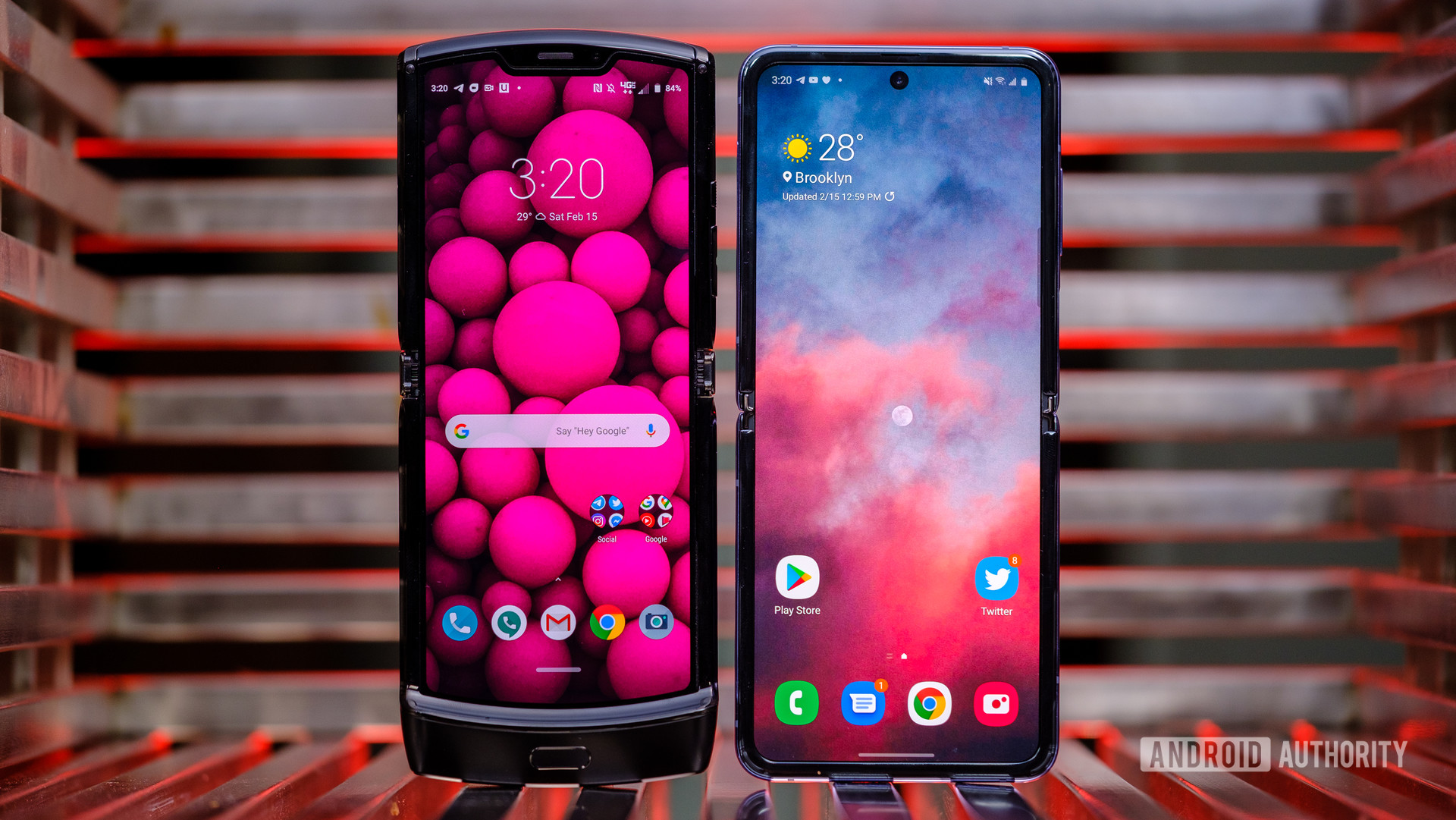Samsung’s February 11 “Samsung Unbeat” event featured a number of new devices, including its next attempt at a foldable smartphone: The Galaxy Z Flip. Unlike the vertical folding screen of the Galaxy Fold, the Z Flip folds horizontally like old-school flip phones – not to mention Motorola’s recently released Razr smartphone.
The flip-phone war is going on, so which smartphone should you get if you subscribe to this particular aesthetic? Let’s see what your money is worth.

Displays
The big feature for both phones – and the most natural place to start our comparison – is their folding screens. Both phones do not completely outperform each other when it comes to the quality and performance of their displays because they both have some unique features. Let’s start with the main, folding scenes.
Primary (folding) display
- Razr: 6.2 inch, 876-by-2,142 pixels
- Z Flip: 6.7-inch, 1080-by-2,636 pixels with HDR10+ support
Due to HDR10 + support, Razr’s screen has a larger, higher resolution screen and better color accuracy, but that’s only part of the story – all of these are folding screens.
According to initial recordings, the Razr folds better than the Z Flip, and is flushed when both sides of the screen are flipped down. The Z Flip has a gap in its hinge and there may be some minor warping on the screen – this is by far the most common in most folding displays, especially Samsung.
However, Motorola had to make some concessions to achieve seamless folding that would affect the durability of the phone, especially using a plastic screen instead of glass like the Z Flip. According to comparisons of two phones from The Virgin, the hinge of the razor is slimmer; The Z Flip, meanwhile, is strong enough to sit with a foldable display in “L” shape, as shown in CNET tests.
Exterior display
- Razr: 2.7-inches, 600-by-800 pixels
- Z-Flip: 1.1-inches, 112-by-300 pixels
However, the exterior scenes are a slightly different story. The Z Flip only has a small exterior display that often shows announcements — although it can also be used as a small viewfinder for taking selfies, which is a sleek feature.
The Razr’s secondary display does not have a selfie viewfinder, but it is quite large. It will show additional usage and notification information, and it will be very interactive. The exterior may be less prominent than the main fold, but it seems to be on the edge of Motorola (unless otherwise noted in Z Flip’s upcoming reviews).
Primary specs
Here’s a quick overview of what each of these smartphones have on the inside:
Processor
- Razr: Snapdragon 710 (mid-tier, kinda slow)
- Z Flip: Snapdragon 855 Plus
Storage and memory
- Razr: 128GB storage, 6GB RAM
- Z Flip: 256GB storage, 8GB RAM
Operating system
- Razr: Android 9.0
- Z Flip: Android 10.0; One UI 2
Battery
- Razr: 2510 mAh; supports fast-charging
- Z Flip: 3300 mAh; supports fast-charging and wireless charging
Cameras
- Razr: 5mp selfie camera; 16mp rear camera
- Z flip: 10mp selfie camera; 2x 12mp rear camera with ultra-wide lense
As you can see, Z Flip makes Razr better in every way. Motorola has pointed out that Razr’s sluggish specifications are necessary to increase its battery life, but the Z Flip not only has more powerful hardware, but also a larger battery. Pros: Samsung.
In fact, despite the hardware compromises required to get a folding screen, the Z Flip actually looks like a decent smartphone in terms of its specifications and various hand-on impressions. The specifications of non-folding devices like Google’s Pixel 4, iPhone 11 or Samsung’s upcoming Galaxy S20 beat or fit the Z Flip in almost every way, but it’s no competition if you just compare it to the newer ones. Razr – Z Flip is a very powerful phone.
Price and availability
- Razr: $1,500; Out now
- Z Flip: $1,380; Out February 14th, 2020






